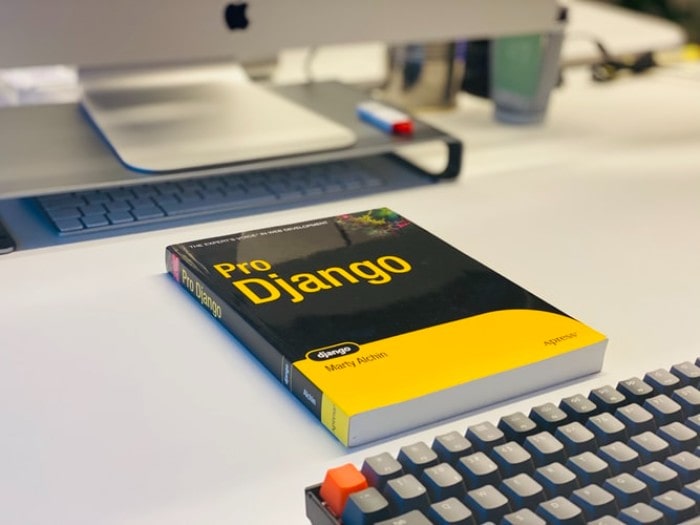
The web development ecosystem is expanding rapidly. And, so is the technologies utilized for creating result-oriented websites. Choosing a development framework has never been so important in terms of getting a scalable, intuitive, and interactive one for the success of a website.
Python’s Django and Java’s Spring are two top-notched frameworks widely used for developing engaging sites at large.
Spring is a leading Java framework used for enterprise-level and simple to the complex website or app development. On the other side, Django is a versatile combination of front-end and back-end development. But that’s not the only difference between the two. There is more to it.
Therefore, we will be comparing here Django Vs Spring based on pioneer features and reach. But before that, we will be defining the two to have a better understanding.
What is Django?
Django is Python’s framework which is used widely for rapid application development. It covers both front-end and back-end development of an application with having ready-to-use components to accomplish several programming tasks.
It brings several out of the box things to create a fully functional website along with the below-mentioned features:
* Get auto-created admin interface to manage things.
* Make the best use of CRUD operations and customize functionalities accordingly.
* Get user authentication, RSS feed, and sitemaps, etc., auto generated without making many efforts.
* Default safety features like SQL injection, clickjacking, CSRF, and other vulnerabilities.
Brands that Use Django: Instagram, Netflix, Spotify, Mozilla, Pinterest, and others.
What is Spring?
Spring is the core part of the huge web development environment that includes several components and modules.
It provides structural development of websites and applications in Java. Spring focuses on the speedy development of applications using its out-of-the-box libraries and modules. Apart from the ready-to-use elements, Spring is one step ahead of Django in terms of having third-party components in the project.
Key features of Spring framework:
* The framework includes dependency injection that gives more power to developers.
* Using Spring framework and its loosely coupled set of components, developers can seamlessly develop even a small web application.
* Developers can focus on individual components without worrying about dependent components.
Brands that Use Spring Framework: Netflix, Trivago, CRED, Craftbase, Platform, and many others.
Comparison Between Django Vs Spring Frameworks
- Learning Curve
When it comes to knowing which framework is easy to learn the most, then both have their own learning curves.
* Django: Python has the core advantage of being an easy to learn programming language. It makes Django a simple to adapt framework by developers. This framework lets you write different levels of code swiftly while creating a business-specific application. Moreover, it has a full stack of out-of-the-box features to provide everything to developers.
* Spring: The Java-based Spring is comparatively difficult to master. But, meant ideal for developing complex enterprise applications. It provides abstract yet important components for building enterprise apps. Also, developers find it cumbersome to include multiple components and libraries. Well, that’s the plus point of the Spring framework, being highly efficient and requires proficient developers to develop a result-oriented application.
- Scalability
Technology can never be the same for long. It requires to scale up time after time. The same happens with Java Web Application Development frameworks Spring, Django, and others. So, you need to know is the scalability reach of both frameworks to make a wise decision at the end.
* Spring: In terms of scalability, Java’s Spring shines as compared to Django. It comes to concurrency and multithreading as the application scales up. Especially, at times of developing complex applications, Spring can run on multiple servers for distributed networks. Furthermore, it comes packed with a lot of abstraction while developing a complex level enterprise-grade application.
* Django: As for this, Django, at times might not fit for large-scale application development. Despite that, the hardware of Django is much cheaper than the development time. So, when it is required to scale up the framework, it keeps on adding hardware at different levels, like database server, caching server, or even application server. On top of that, Django can be scaled up vertically and horizontally. Vertically is adding more resources on the same machine, while horizontally is adding more machines.
Quick Comparison Between Django Vs Spring
* Spring is a Java-based framework, meant to develop a Java enterprise app. On the other side, Python-based Django builds web applications.
* Both the frameworks are open source and free to use.
* Spring is a lightweight framework with microservices, while Django is matured, stable, and widely used framework.
* Spring has a growing community of 45K GitHub Stars. While Django stands at 55k GitHub Stars.
* Spring requires proficient skills and knowledge to operate, while Django is easy to learn the framework.
Final Analysis
With all said and compared between Django and Spring, there is no clear winner. Choose to have the best web app development framework meeting your requirements and budget.
In case, your inclination feels more towards the Spring framework’s side, then know more about this, by reaching JavaIndia. The leading company offers end-to-end Java development services for an enterprise of all sizes and industry types.
Author’s Bio:
Amulya Reddy is an expert and detail-oriented marketing professional has over 5+ years of experience in marketing & technology. He works diligently for JavaIndia, which is a pioneer Java development company running successfully for these years. He writes informative content on web app development frameworks and a newer set of technologies.
